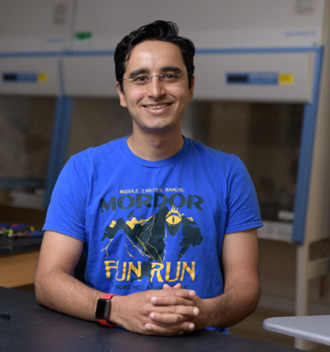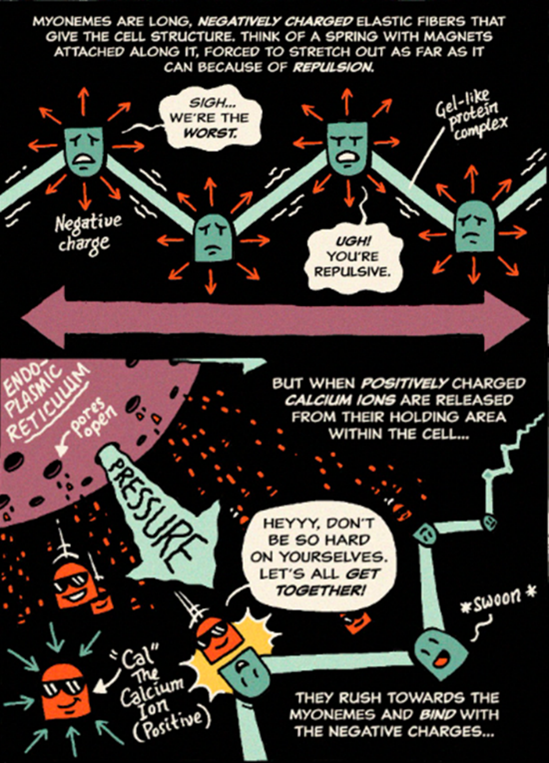2024 Judith H. Greenberg Early Career Investigator Lecture
Fast and Frugal: Cells That Move Without ATP and Life-Saving Tools That Cost Pennies
 Credit: Rob Felt, Georgia Tech.
Credit: Rob Felt, Georgia Tech.Saad Bhamla, Ph.D.
Assistant Professor
Chemical & Biomolecular Engineering
Georgia Institute of Technology
Lecture followed by Q&A session
National Institutes of Health
Bethesda, Maryland
*NIH students and trainees working at the main NIH
campus are encouraged to attend in-person
![]() 2024 Judith H. Greenberg Early Career Investigator LectureSubmit a question for the speaker in advance using the Questions & Comments box in the registration form.
2024 Judith H. Greenberg Early Career Investigator LectureSubmit a question for the speaker in advance using the Questions & Comments box in the registration form.
Those requiring sign language interpretation and/or other reasonable accommodations should submit a request using our contact form at least 5 days prior to the webinar.
Research Summary
 Part of the comic “Protists: Ultrafast Micro-Marvels” that the Bhamla lab created to explain their work on ultrafast contraction in ciliates. Credit: Bhamla lab.
Part of the comic “Protists: Ultrafast Micro-Marvels” that the Bhamla lab created to explain their work on ultrafast contraction in ciliates. Credit: Bhamla lab.Single-celled organisms called ciliates use protein engines powered by calcium to achieve ultrafast motion. Dr. Saad Bhamla is uncovering the mechanics of these calcium structures, which differ from ATP-driven motors that are found in most life forms. His lab is working to build synthetic versions of these protein engines that they can control using light. These calcium-based engines could be useful to design biohybrid cells capable of powering themselves using either calcium or ATP.
Another focus of Dr. Bhamla’s lab is frugal science—building accessible and affordable tools for global health applications. He’s developed devices that cost less than a dollar each, including a paper centrifuge for malaria diagnostics inspired by a children's toy, a hearing aid built with open electronics for presbycusis, and a nucleic acid vaccine delivery device inspired by a barbecue lighter. During his talk, Dr. Bhamla will discuss the challenges and successes in translating these devices for field studies and through startups for commercialization.
Biographical Sketch
Dr. Bhamla is an associate professor of chemical and biomolecular engineering at Georgia Institute of Technology in Atlanta. His interdisciplinary research in the physics of living systems uncovers the principles underlying ultrafast movements in biology and informs the design of bioinspired robotics. He’s at the forefront of the emerging field of frugal science to develop affordable and accessible tools for global health applications.
Dr. Bhamla directs notable projects like the Frugal Science Academy and the Jungle Biomechanics Laboratory in the Amazon Rainforest. These endeavors aim to democratize access to science through diverse training opportunities that empower students and teachers to engage in synthetic biology. Dedicated to making science accessible and enjoyable for everyone, he also creates multilingual comics about his research.
He completed his doctoral and postdoctoral research at Stanford University and is now supported by the NIGMS Maximizing Investigators’ Research Award and the Science Education Partnership Award programs through grants R35GM142588 and R25GM142044, respectively.
For more on Dr. Bhamla, check out this interview with him on our Biomedical Beat blog.
References
Gupta A, Yu J, Challita EJ, Standeven J, Bhamla MS. OpenCell: A low-cost, open-source, 3-in-1 device for DNA extraction. PLOS One. (2024) doi: 10.1371/journal.pone.0298857.
Floyd C, Molines AT, Lei X, Honts, JE, Chang F, Elting MW, Vaikuntanathan S, Dinner AR, Bhamla MS. A unified model for the dynamics of ATP-independent ultrafast contraction. PNAS. (2023) doi: 10.1073/pnas.2217737120.
Patil VP, Tuazon H, Kaufman E, Chakrabortty T, Qin D, Dunkel J, Bhamla MS. Ultrafast reversible self-assembly of living tangled matter. Science. (2023) doi: 10.1126/science.ade7759.
Xia D, Jin R, Byagathvalli G, Yu H, Ye L, Lu C-Y, Bhamla MS, Yang C, Prausnitz M. An ultra-low-cost electroporator with microneedle electrodes (ePatch) for SARS-CoV-2 vaccination. PNAS. (2021) doi: 10.1073/pnas.2110817118.
